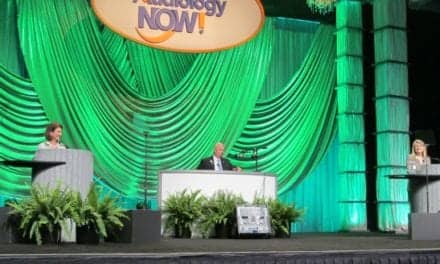Practice Management | Hearing Review July 2014
Using team-building and rewards & recognition activities for maximum success
The terms “team building” and “rewards & recognition” are often used interchangeably, and they can have some similar outcomes in that they both contribute heavily to increased employee engagement. However, they are actually quite unique and should be approached differently—and strategically.
Team building is often seen as a way to unite a group, to facilitate a team getting to know each other and make connections on one or more fronts, and to cultivate strengths as well as address development areas in the team as a whole. Rewards & recognition, on the other hand, is often intended as a way to say “job well done, thank you!” Let’s delve into each of these tools a little bit more.
Team Building
Team-building activities can result in newfound familiarity among teammates that ideally can then easily grow into a true enjoyment and respect for each other. But sometimes, when not approached thoughtfully, these activities can result in just “a fun day out of the office” but won’t likely have a true impact once you return to the practice.
In order to achieve a lasting impact, team-building activities need to be strategic, in both design and execution. To lead a truly effective team-building activity, you must take these three key steps:
1) Determine what challenges your team faces and create activities that address those development areas, such as communication, trust, collaboration, etc;
2) Avoid making these activities too competitive; think unity, not division; and
3) Practice, practice, practice. Think SMaC recipe (specific, methodical, and consistent) or training for a marathon—team-building activities are most successful when done consistently and not just once a year
Rewards & Recognition
While team-building and rewards & recognition programs can be both fun and considered a “treat” by your team, where they differ is that rewards & recognition programs are intended as an appreciation for effort and results. Another key differentiation from team building is the focus on the individual, rather than the team as a whole; rewards & recognition programs allow you to demonstrate to your team that you know who they are as people.
A survey by Towers Watson found that, of 75 possible drivers of employee engagement, the one that was rated as the most important was the extent to which employees believe that their senior management have a sincere interest in their well?being. That’s a powerful illustration of how important it is to connect with your team as individuals, not just as a group.
John Maxwell’s Law of Victory talks about recognizing the effort and rewarding the result. What kinds of recognition and rewards do your staff prefer?
- Public recognition or private, written or verbal?
- Does your staff prefer an afternoon off or a gift card?
- Do you know what their favorite restaurants are?
Use your one-on-one meetings to offer face-to-face, focused attention and ask for some of these details that you can then use in meaningful ways.
In summary, both team-building and rewards & recognition activities can have an amazing impact on your team’s level of engagement; they just need to be approached strategically to create the true benefit of employee development, growth, and having a team who knows you care and will be there to help them succeed.
Original citation for this article: Naatz R. Team building and employee engagement: What do they really mean? Hearing Review. 2014;21(7):36.






